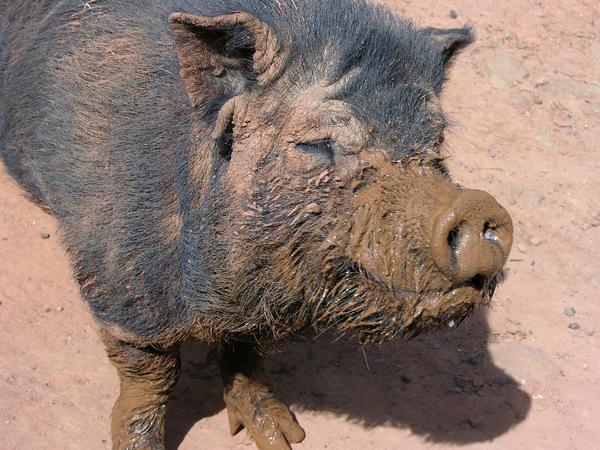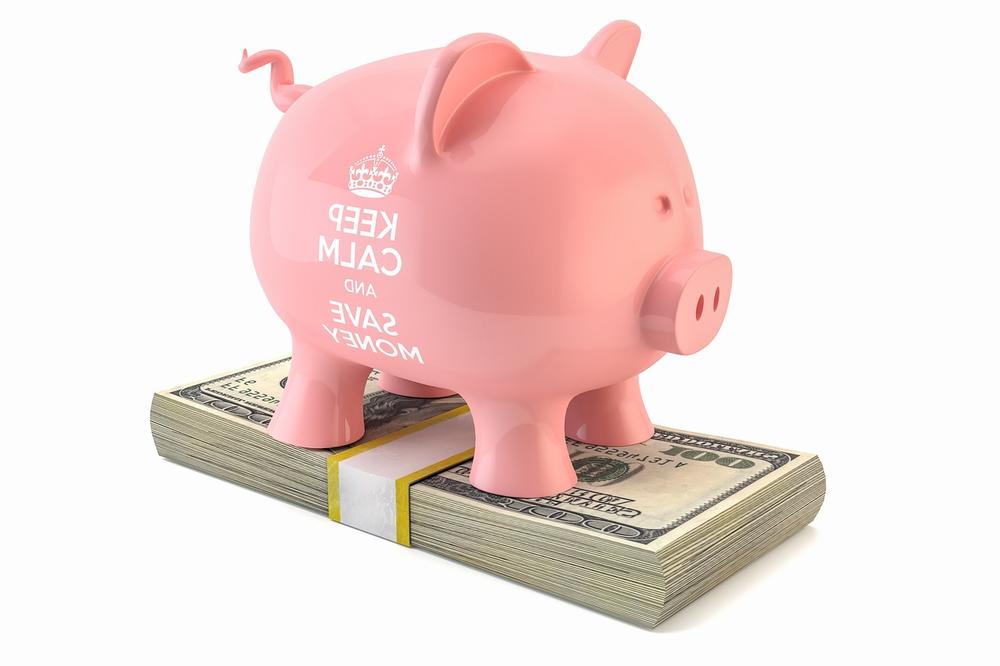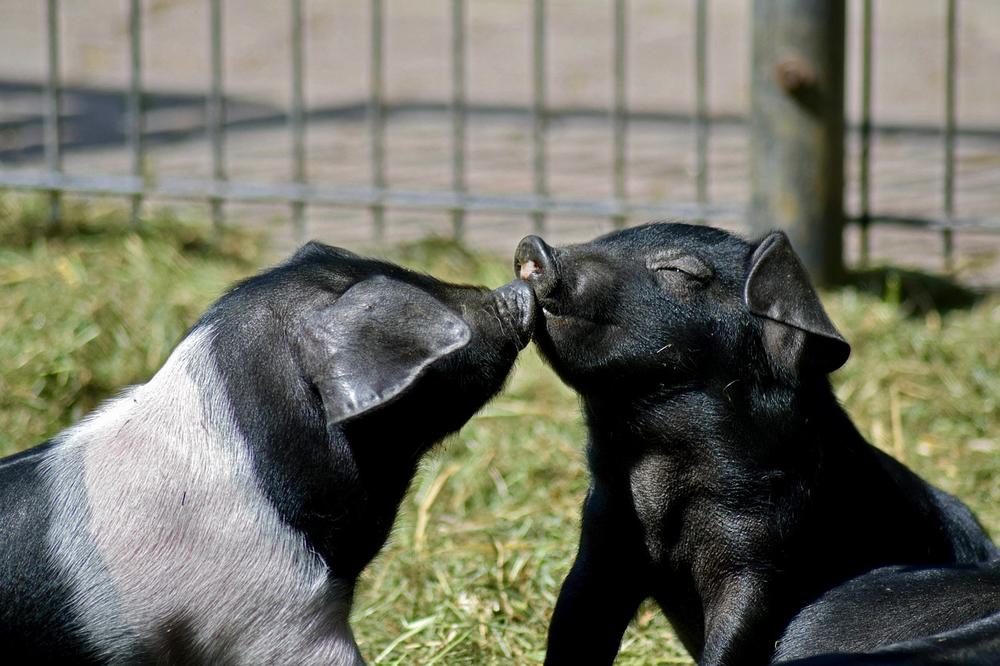How Much Does It Cost to Raise a Pig? (Let's Do the Numbers!)

Want to know just how much it costs to raise a pig?
Like, really know?
Well, you're in the right place, my friend.
I get it – you've got dreams of a backyard filled with chubby little oinkers or a booming pig farm that brings home the bacon. 🐷
It's a tantalizing thought – being self-sustainable, profiting from your own blood, sweat, and piggy tears.
But before you dive headfirst into the muddy world of pig farming, let's talk numbers, shall we?
Let me break it all down for you.
Hang tight, because we're about to take a deep dive into the cost of raising a pig.
Factors That Influence the Cost of Raising Pigs for Meat
The cost of raising pigs for meat is influenced by factors such as location, piglet prices, feed expenses, and capital costs. Other considerations include seasonal variations, transportation expenses, and the choice of slaughtering options.
Are you curious about the expense of raising a pig for meat?
Let me tell you, plenty of factors come into play.
It's not as easy as buying a piglet and feeding it.
First of all, the cost can vary depending on where you live. Different locations have different prices for piglets and feed.
Apart from that, the time of year can make a difference.
Winter seasons tend to raise costs because pigs eat more during those cold months and there's less garden waste for them to munch on.
Now let's talk about piglets.
You can buy them at around 8 weeks old or breed your own.
Buying piglets is convenient, but it comes with a cost.
On the other hand, breeding your own piglets can save you some money, but you'll still need to consider the extra expenses for their feeding.

Now, onto another major expense—feed. The cost of feed depends on your location and how far it needs to be shipped.
You're looking at spending anywhere between $100 to $150 per pig just on feed.
Remember that piglets will eat more as they grow, so the cost will increase over time.
And what about slaughtering?
The choices you make here can also affect your wallet.
Some people prefer to do it themselves, while others hire a professional butcher. Bear in mind that the size of the pig matters too.
Smaller pigs are easier to handle and yield cuts perfect for small families.
To wrap it up, expect to get about 64% of the pig's weight in usable meat, with prime cuts making up around 48%.
So, before you dive into raising pigs for meat, take a moment to consider these factors.
Location, piglet price, feed quality and quantity, slaughtering choices...
All of these contribute to determining the cost.
It's not as straightforward as you might think, but with planning and careful consideration, you can raise your own delicious pork without breaking the bank.
Main points I'll expand upon further down this article:
- Commercially, pigs are typically harvested around 150 pounds for a price of $2.50 per pound.
- Prices increase to $3.30 per pound if pigs are kept beyond the preferred weight.
- The total cost for raising a pig ranges around £225, excluding butchery.
- Small producers should price their pork appropriately as a prime product.
- Homemade organic/non-GMO/soy-free pork can be relatively inexpensive compared to store-bought options.
- The cost to raise a pig ranges between $3 and $3.50 per pound, while buying from the grocery store costs $5 to $7 per pound.
- Factors affecting the feed conversion ratio (FCR) include age, genetics, access to water, health, parasite load, climate, sanitation, and living conditions.
- Young pigs consume 5 pounds of feed daily, resulting in an estimated expenditure of $115 per pig in feed costs.
- Different pig breeds yield different results in terms of meat quality and efficiency.
- Raising hogs can be cost-effective by considering factors such as free-ranging, breeding your own hogs, selling piglets, and learning to butcher.
Now that we've discussed the factors that influence the cost of raising pigs, let's dive into a detailed breakdown of these pricing factors in various regions.
You won't believe how much money you could save by comparing prices!
Cost Per Pound of My Pigs
| Weight Range | Pricing Factors | Average Cost per Pound |
|---|---|---|
| Piglet to Youth | Labor costs, feed quality, medication, and vaccines | Moderate |
| Youth to Finish | Feed conversion, growth rate, and potential medical issues | Moderate-high |
| Finish to Market | Final weight, transport, and processing costs | Moderate-high |
| Homemade Pork | Organic/non-GMO/soy-free, personal care, and time | Relatively inexpensive |
| Store-bought | Processing, packaging, and distribution costs | Moderately expensive |
The price for my 2019 pigs can vary based on different factors.
Let's break it down, shall we?
Commercially, a pig weighs around 150 pounds when harvested, with a hanging weight of about 150 pounds per pig.
That comes at a price of $2.50 per pound.
If you keep the pig beyond this weight, the price goes up to around $3.30 per pound due to additional labor costs.
Buy piglets in spring and harvest them in fall – a preferred method for ample growth into tasty pork.
In 2011, raising a pig from start to finish cost approximately £225.
This includes £50 for the weaner, £6.50 per bag for feed, £20 for bedding, and £25 for slaughter.
Note that prices may have changed since then, so stay updated.
Small producers struggle with pricing their pork appropriately.
Remember, pork should be priced as prime, quality product.
Don't sell yourself short!
Calculating the price per pound involves breeding costs, feed costs, and butchering costs.
Raising pigs organically without GMO or soy-based products can be relatively inexpensive compared to store-bought options.
The cost to raise a pig from piglet to freezer, including slaughtering costs and feed costs, ranges between $3 and $3.50 per pound.
Grocery store pork is typically priced around $5 to $7 per pound. Quite a difference!
Commercial farmers sell whole or half pigs at a fixed rate of $5 per pound, with the average slaughter weight being around 290-300 pounds.
Keep that in mind if buying a pig for personal consumption or profit.
And speaking of buying, a slaughtered pig could cost around $875.
Compare prices from different sources to get the best deal possible.
Consider various factors when raising pigs.
Take your time, do research, and make an informed decision.
And now, let's dive into the critical factors that can impact the cost of raising a pig for personal consumption or profit.
Proper nutrition and diet planning play a crucial role in optimizing feed conversion and ensuring efficient growth.
Age, maturity, genetics, access to fresh water, overall health, climate, sanitation, and living conditions all contribute to the Feed Conversion Ratio (FCR) and, subsequently, feed costs.
So, how exactly does this all come together?
Let me explain:
Factors That Impact Feed Conversion Ratio (FCR) in Pigs
Let's talk about what affects the Feed Conversion Ratio (FCR) in pigs, and why it's important for you as a pig farmer.
Proper nutrition and diet planning are crucial for an efficient FCR. By choosing the right combination of feed, you can help your pigs convert their food into meat more efficiently.
And let's face it, we all want our pigs to grow big and strong! 😄
Age and maturity also have a role to play in FCR.
Older pigs tend to have a lower FCR compared to younger ones. This means that as your pigs get older, they'll require less feed to produce the same amount of meat.
But hey, it's not just about age.
The recommended daily feeding amounts vary depending on your pig's age too.
So, pay attention to that.
Now, let's talk about the quality of the feed.
You should give your pigs high-quality feed to avoid overfeeding and keep them safe from harmful mycotoxins. Trust me, you don't want anything harmful going into your pigs' bellies...
There are also other factors that influence FCR.
Genetics, access to fresh water, all in all health, parasite load, climate, sanitation, and living conditions all come into play.
When you're starting out in pig farming or purchasing a farm, ensure to consider the breed and genetics of your pigs.
These factors can have a significant impact on food conversion efficiency and feed costs.
Proper care and attention to these factors is key.
It will ensure that your pigs thrive and that you achieve optimal feed conversion ratios.
So, happy pig farming to you!
But how can you ensure that your pigs are getting the most out of their feed?
What if there were specialized diets or supplements that could drastically improve their feed conversion efficiency?
Well, let me share some success stories and experiences that may just surprise you!
Maximizing Feed Conversion Efficiency for Increased Profitability
You can boost feed conversion efficiency in pig farming by introducing specialized diets or supplements.
When young pigs reach 2 to 5 months old, they consume around 5 pounds of feed daily, resulting in a significant expenditure of $115 per pig on feed costs.
To optimize profitability and sustainability, you need to implement innovative feeding strategies during this period.
By sharing success stories or experiences from raising pigs using these strategies, you provide valuable insights that can help others improve their operations. Enhancing the pigs' ability to convert feed into growth ultimately leads to improved efficiency and economic viability in pig farming.
And if you're interested in further maximizing your feed conversion efficiency, I highly recommend checking out my article, the Ultimate Guide to Gottingen Mini Pigs.
Exploring Unique Heritage Breeds and Their Meat Quality
Raising pigs can be satisfying, whether for personal use or profit.
Navigating pig farming can be daunting.
Now, let's explore unique heritage breeds with exceptional meat quality.
The Idaho Pasture Pig excels at foraging and produces flavorful, well-marbled meat.
Then there's the Gloucestershire Old Spot, known for its friendliness and succulent pork.
And of course, the Mangalica pig.
This curly-haired beauty, also called the Wooly pig, has fat that adds incredible flavor to its meat.
Now, listen to some anecdotes about these heritage breeds.
Tim raised Tamworth pigs on his small farm.

After months of care, he savored the homegrown bacon - smoky and tender, an unforgettable experience.
Sally chose Large Black pigs.
Not only did efficient feed conversion save her money, but customers raved about the juicy and well-marbled sausages and chops.
Consider cost in your decision-making.
Piglet prices range from $50 to $200, depending on breed and seller.
Remember additional expenses like housing, feed, vaccinations, and potential medical costs.
Factor in these costs upfront for a smooth pig-raising journey.
Don't forget to castrate males to prevent interbreeding and boar taint in the meat.
With this information, you'll be ready to start raising pigs.
Stay tuned for more tips on pig housing options in our next post.
And now, let me share with you some creative ways to repurpose materials for building shelters and fencing!
Strategies for Cost-Effective Hog Raising and Improved Self-Sustainability
Consider cheaper options for building shelters and fencing
Taking care of hogs requires caution to avoid incurring high expenses, but fret not!
You can save money on shelters and fences.
Instead of buying expensive materials, why not repurpose stuff you already have or find more affordable alternatives?
Think about using old pallets or reclaimed wood for building shelters. They may not only be cheaper but also strong enough.
As for the fences, explore options like electric fencing or recycled wire mesh.
These alternatives will help you keep costs low while still providing a safe space for your hogs.
Get the most out of your money by using smart strategies
Raising hogs for meat requires considering both time and expenses. Here are some cost-effective strategies for you:
- Let your hogs roam freely: Instead of relying only on bought grains, give your hogs an area to wander and forage for food. This way, you reduce your feed costs.
- Breed your own hogs: Breeding your own hogs saves you money in the long run. By carefully selecting and breeding your stock, you'll always have piglets without having to buy them from others.
- Sell piglets for profit: Offset costs by selling piglets to other farmers or individuals interested in raising hogs. It helps recover your initial investment.
Butchering your hogs yourself can increase cost-effectiveness even more.
By learning to do it on your own, you avoid additional labor and skin expenses from professional processing.
Infrastructure and space are vital for cutting costs and becoming self-sufficient
Having proper infrastructure and enough space is key to cost-effective hog raising.
Build a sturdy pen with secure fencing to keep your hogs safe and prevent escapes or attacks from predators.
Your hogs need adequate shelter to protect them from extreme weather and provide a comfortable living environment.
Having ample space for your hogs offers additional benefits:
Free-range hogs can help clear your land, reducing the need for expensive machinery or professional services.
Achieving self-sustainability becomes easier when you can produce a significant portion of your hog's feed on your own land.
While being cost-effective is important, make sure that you consider the emotional aspect of slaughtering animals and the time required for their care.
Finding a balance that suits your personal and financial situation will ultimately lead to a successful and fulfilling experience raising hogs.
Evaluating the Profitability of Raising Pigs for Meat
Evaluating if raising pigs for meat is profitable can be exciting.
Let's delve into key points to help you determine if it's worth pursuing.
One important aspect is exploring revenue opportunities beyond selling meat. Think beyond the pigsty and consider using pig manure and forming partnerships with local restaurants that value local products.
These extra income sources can make a real difference.
Now, let's discuss the numbers.
Selling rare breed pork online can fetch £384 per 100kg pig for prime cuts.
That's a significant amount of money, don't you think?
Remember that breeding gilts and selling piglets may not cover all costs initially, so don't rely solely on them.
But don't worry!
Raising pigs for meat can still be cost-effective.
They grow quickly and provide ample meat.
By selling half of the litter, you can offset feeding expenses and make a profit of over $100 per pig.
Who would decline that opportunity?
However, there are other factors to consider.
Slaughtering and butchering costs, for instance, can eat into your profits.
And don't you forget, success on a small scale may differ from larger operations.
Despite potential financial fluctuations, there are non-monetary rewards too.
Raising these delightful creatures can bring joy and fulfillment, whether or not the financial gains are substantial.
So, keep that in mind when assessing pig raising profitability.
With that said, take these points seriously as you weigh the pros and cons of venturing into pig raising.
It's an exciting journey, and I wish you the best of luck!
And that's all for today folks.
Before you leave, can I ask you something? Was my blog post helpful to you? If it was, I would greatly appreciate it if you could share it with your friends and family. You'll find social media sharing icons that you can click on to instantly spread the word. Thank you so much!
Until next time,
-Chris Campbell